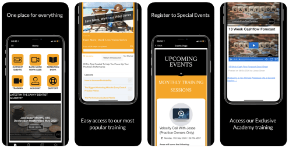Great team members can create great leverage, productivity, and an awesome patient experience.
But a lot of practice owners don’t have a systematic approach to bringing new people into the practice, and it can be a bit ad hoc.
When you have an ad hoc approach to recruitment, you don’t always find the right people or set them up for success that they need. It’s one of the biggest mistakes we see – not onboarding, training, or performance managing properly.
It creates a lot of mutual frustration because you don’t get the results you’re looking for, and your new hires feel set up to fail.
That’s why it’s crucial to have a systematic approach to recruitment, onboarding, and retention.
Here are ten steps that you can use to streamline and systemise your recruitment and retention so that you get the right people – and keep them!
1. Develop an ideal applicant avatar
Who are you looking for? What tasks, responsibilities, and success metrics will they be across?
2. Consolidate your organisation chart
Where does this role sit in relation to other roles? Who would they be working most closely with?
3. Cashflow
Has this position been budgeted for?
4. Create and place the advertisement
Remember that job advertisements are exactly that – advertisements. You want it to be exciting, enticing, and persuasive.
5. Sort and vet applications
You want the best cultural and performance fit possible in order to have a great team.
6. Prepare interview questions, skills test, and evaluations
The last thing you want is to look unprepared or scrambling in front of your interviewee – they will also be looking for cues on what kind of workplace you are and what it would be like to work for you.
7. Initial interview
This is where you get a feel for their personality profile, ask questions that their application may have raised, as well as of course getting your interview questions and skills test done.
8. Due diligence
Contact their references, and check registrations if applicable.
9. Formal job offer
This is the exciting bit! Make sure you’ve got a letter of offer and enterprise agreement – and if they’re a contractor, provide a written contract. It’s best to cover all your bases here.
10. Onboarding and Training
Give them the necessary assets, SOP’s and dashboards in order to measure success, and review their progress weekly. It can take about six months to effectively onboard a new hire, and it’s important to check in regularly to ensure their training is going well.



